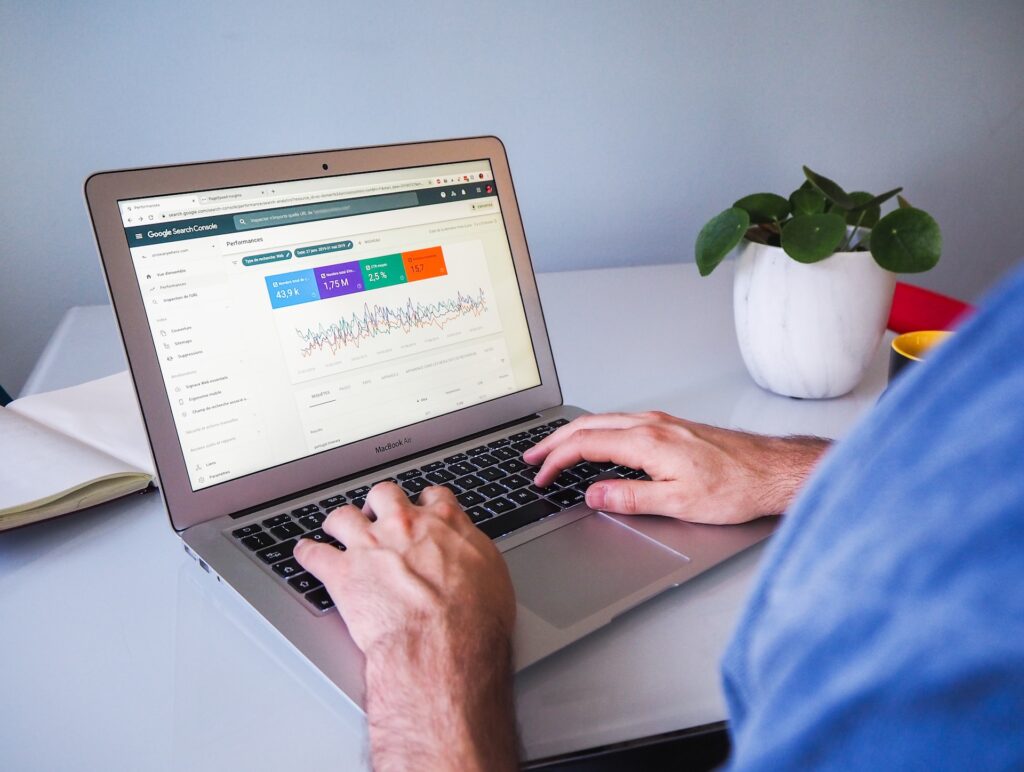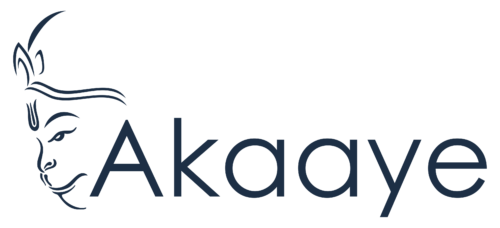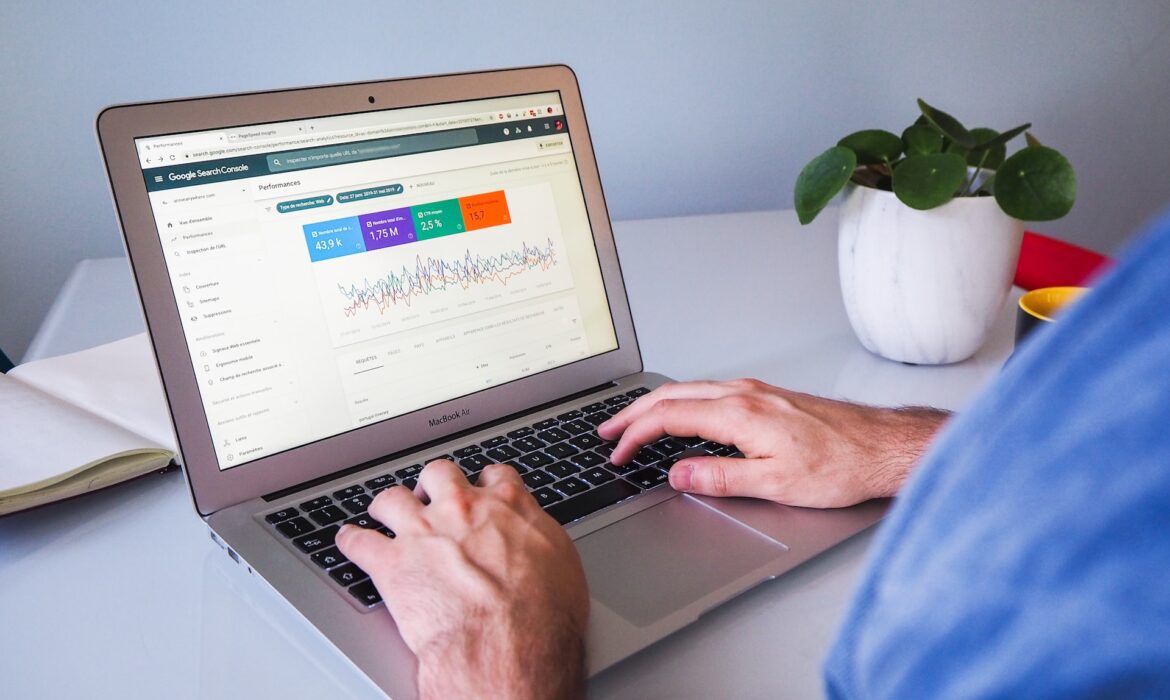
Over the Google search engine platform, you have a 63% chance of getting your content noticed. You got the right people to see your ads at the right time through search engine marketing
Search Engine Marketing, or SEM, refers to these kinds of advertisements. Do you want to learn more about SEM or how it can benefit your business?
The purpose of this blog is to teach you what SEM is, explain some of the terms you should be familiar with, illustrate how SEM can benefit your business, and provide you with tips for running a successful campaign. It’s time to get started.
What Is Search Engine Marketing(SEM) & How Does It Work?
A search engine marketing campaign involves using paid advertisements to increase a website’s visibility in search engine results pages (SERPs). Marketing professionals commonly use Google as a paid search tool.
To rank their content, specifically ads, for target keywords, companies use keyword bidding in SEM. Whenever a user searches for these keywords, the search engine displays advertisements from the company.
The quick visibility a company receives from search engines makes SEM an incredibly powerful digital marketing tactic. In addition, the company only pays for each click. It is for this reason that search engine marketing is also referred to as Pay Per Click (PPC) advertising. It is for this reason that search engine marketing is also referred to as Pay Per Click (PPC) advertising.
Major Platforms for Search Engine Marketing:
Advertising can be placed on a SEM platform through a search engine. When a user searches, your ads appear. In terms of search engine marketing, these are the two most commonly used platforms:
Among the most popular search engine marketing platforms is Google. There are billions of searches conducted on the search engine every day, making it a powerful platform for displaying ads and targeting the right demographic.
A third platform you can use for SEM is Bing. By investing in SEM with Bing ads, you can reach users who don’t use Google for their searches by displaying your ads on partner sites such as Yahoo and MSN.
When using search engine marketing where can your ads appear
In Google search results, you will want to keep your ads on the first page as long as possible when using search engine marketing. You are more likely to appear when a customer searches on Google or another search engine if your ad appears in a higher position.
- Search engines are the only source
- This is only available on websites
- In search engines and on websites
- In social media and on websites
An excellent way to increase your business’s reach is through search engine marketing. In search engine marketing, if you use Google for your campaigns and get the wrong placement, it could be detrimental to your business.
When advertising using search engine marketing you only pay
- Search results where your ad appears
- Conversions on your website
- If a user clicks your ad
- If a user spends more than two minutes on your website
The advertiser pays your company when you click on an ad, not when you click on the ad.
Common SEM and PPC Terms You Should Be Aware Of:
There are many aspects to search engine marketing. You should familiarize yourself with the following terms if you wish to learn more about it:
- Search engine marketing impressions are how many times your ad appears on search results. A person’s number of views or clicks on your advertisement is not taken into account.
- Click-through rate (CTR) refers to how many people who saw your advertisement clicked through to your website. A metric for measuring the performance of keywords and ads.
- Cost Per Click (CPC): Only some people will click on your advertisement when they see it on their screen. With SEM, a company pays for each click it receives on its ad. Hence, ‘cost per click’. You can adjust this cost before setting your campaign in order to moderate the amount of money that goes into the campaign. Selecting your target groups and setting a budget limit will allow you to control the costs.
- Every SEM or PPC campaign has a conversion goal. After clicking on your ad, people take a desired action. In PPC advertising, businesses can choose from a variety of conversion goals, including business inquiries, email subscriptions, and sales.
- An ad campaign’s cost per acquisition (CPA) is calculated by dividing the total cost of the campaign by the number of conversions you receive.
- In SEM, a bid refers to the maximum amount you are willing to pay per click. Generally, marketers outbid their competitors to ensure that their PPC ads are prioritized over theirs by the search engine. In this case, the search engine cannot charge you more than INR 10/click. A lower CPC might even be more cost-effective than an ad bid.
- Tracking and performance reporting: This refers to tracking the performance of your advertisement and making adjustments to meet your conversion goals.
We will now discuss the difference between SEM and SEO to familiarize you with both concepts now that you are familiar with SEM and PPC terminologies.
SEM v/s SEO: What’s the difference?
How does SEM differ from SEO? Read on if that’s the case. There are several critical differences between SEO and SEM:
Difference #1: SEM is paid, and SEO is organic.
The process of increasing website visibility and traffic through paid means is known as SEO Search Engine Marketing & Optimization. Unlike PPC advertising, SEO is an organic method of achieving the same goals. First, the involvement of monetary investment differentiates SEM from SEO.
- The cost of getting website traffic increases when one engages in search engine marketing.
- By participating in SEO, one can drive traffic to their website without spending any money.
Difference #2: SEM attracts instant traffic while SEO takes time.
Another major difference between SEM and SEO is the duration it takes to achieve results.
- Search engine marketing helps companies gain quick visibility on search engines. Ads for SEM or PPC campaigns appear on the first page of search results as soon as they are run. In search results, links appearing on page 1 are more likely to be clicked. Therefore, SEM beats SEO when it comes to attracting traffic to websites.
- However, SEO might require months or years of sustained effort before tangible results are achieved. Content quality, originality, keyword usage, content length, meta tags, etc., must be better than competitor’s content. Research, SEO savvy, prolific writers, and competitor analysis take a lot of time, energy, and resources. Your blog or website content that you may have optimized for SEO may take months or even years to appear on page 1 of Google. In other words, it will take you longer to attract website traffic and convert visitors into customers!
Difference #3: SEO & SEM focus on different conversion goals.
As a general rule, SEO focuses on long-term goals, while SEM focuses on short-term goals with a quick turnaround time (TAT).
Search engine optimization results in sustained website traffic over a period of time. To succeed in search engine optimization, you must outrank and outperform your competitors. Thus, they gain domain authority and followers. As these followers convert into customers, they become customers. The aim of SEO is to meet a company’s conversion goals. There is one disadvantage: it takes a long time.
On the contrary, SEM aims to boost conversions immediately. It’s a race against the clock. The first step to getting traffic to a website is to get it there. Next, visitors must be attracted to the website’s landing page. Getting them to convert is the last step.
An organization that invests in search engine marketing does not do so solely to increase website traffic. It helps them reach their conversion goals faster. As opposed to SEO, SEM’s conversion goals are more immediate and tangible. They include building brand awareness, attracting business inquiries, and making sales.
SEM v/s SEO Difference: An Analysis
Although SEM and SEO differ, both are powerful and potent. Companies that seek to further their business adopt a healthy combination of the two. Investing in SEO is a long-term strategy that your business should pursue. Optimizing it over time will ensure you don’t need to spend money on conversions.
We SEM is recommended to ensure that your immediate marketing goals are met quickly. From a business standpoint, it does not make sense to choose either. Using both SEO and SEM will yield the best results.
The SEM and SEO services of a reputed marketing agency can help you achieve your conversion goals through content marketing.
Importance and Benefits of Search Engine Marketing SEM
Today, most businesses have an online presence due to the digital age. You need to stand out from your competitors if you want to succeed online.
It takes too long for digital marketing practices like SEO to yield tangible results, even though it is a time-tested technique for attracting website visibility. Search engine optimization might not be the best option for companies seeking immediate results. It is here that SEM proves to be extremely useful.
Listed below are the top benefits of Search Engine Marketing:
Benefit 1: Outranks high DA Websites on search engines.
You can outrank high DA websites on search engine results pages by using Search Engine Marketing (SEM).
DA Domain authority refers to this. An SEO score is based on sustained performance over time. Among these factors are content quality, SEO friendliness, page loading speed, and link-building efforts.
The domain authority of a website affects its ranking faster than the domain authority of a website with a low authority. In terms of marketing queries, established websites like Hubspot, Neil Patel’s blog, Search Engine Land, and Ahrefs always appear first.
Having worked hard for years and perfected SEO, they can guarantee these top spots. It will not be possible for you to automatically outrank these websites in search engines, even if you have better content than theirs.
SEM resolves this problem permanently. With one PPC campaign, you can easily outrank these websites and increase your website’s visibility.
Benefit 2: Helps you target potential customers on search engines.
A business can quickly target website visitors and turn them into customers by using search advertising.
It is common for people to search for the ‘best patisserie in New York’ because they want to visit one of the best patisseries in the city. Ranking for this keyword with SEO can take months or years, but with SEM you can appear at the top of SERPs instantly. The magic happens when you bid on the right keyword and launch a SEM campaign.
Benefit 3: Allows targeted advertising that is not intrusive.
A third advantage is that SEM allows you to reach a niche audience that is ready to make a purchase, unlike social media advertising that has a more intrusive advertising nature.
SEM marketing allows you to target buyers at some stage in their buying journey. This enables you to reach users who are specifically seeking your products and services. This makes SEM conversion-friendly. You can use it to help you achieve your conversion goals one step closer.
Benefit 4: SEM is more affordable and cost-effective than traditional marketing.
SEM is also affordable, which is another advantage. Ad budgets as low as $10 a day are possible. CPC is what makes SEM marketing so attractive. Only when someone clicks your ad do you have to pay. It is free to post an ad on either Google or Bing, as long as someone clicks on it.
You can adjust your PPC campaign account if your ad does not convert quickly or has a low conversion rate. Traditional TV commercial ads cannot be altered as quickly or easily as online ads. It is not possible to pull back a TV commercial once it has gone live. In addition, once you have paid, and the advertisement has been printed, it is very hard for you to redact it.
Benefit 5: Gives scope for targeted marketing.
In our opinion, SEM is a great strategy for targeted marketing. In addition to capturing users who may be interested in your niche products and services, SEM allows you to make your ads as targeted as you like.
You can choose the time for displaying your advertisements, target people by location, gender, and age group – you have an ocean of options with SEM.
Effective Tips for Running a Search Engine Marketing Campaign
Do Want your SEM campaign to be successful and meet your conversion goals faster? Need help reducing the cost per click of your PPC campaigns?
If the answer is yes, read on.
We Here are 10 tips for running a successful search engine marketing campaign.
Tip 1: Identify your target audience.
Investing in SEM ad campaigns means using up your marketing budget. You need results. Investments need to be made wisely. Running a PPC campaign is not enough. Your target audience should be identified. Knowing your target audience will help you understand your prospective buyer’s psyche, increasing the likelihood of a successful campaign. The following a buyer’s needs allows you to tailor your ads to suit them.
Tip 2: Perform keyword research.
SEM campaigns that rely on keyword research are also likely to be successful. It is important to engage in keyword bidding when you are engaging in PPC advertising. In keyword bidding, you tell the search engine to show your ads to people who are searching for the keywords you have specified.
If you bid on the wrong keywords, your advertisement may appear to an audience that isn’t interested in your products and services. Prior to launching your SEM campaign, you should conduct a thorough keyword analysis. The most effective keywords are those that contain long-tails.
Tip 3: Write relevant and compelling ad copies.
To ensure that your SEM ads are impactful and your CTR is high, people should want to click on your advertisements. Here are some tips that can help you make a compelling ad copy:
- Ads should be catchy and satisfy the search intent of the user.
- Ad copy should include the keyword for search engine optimization.
- The key to successful ad copy is to avoid long paragraphs. Use succinct language.
Tip 4: Make a conversion-friendly landing page
When you make a compelling ad copy, the user clicks on your ads. Perfect. Now what?
In the next step, the user is directed to your landing page. Here is where all the action takes place. Consequently, you need to make your landing page as perfect as possible. Here are some tips for making a high-converting landing page:
- There is no such thing as a homepage on a landing page. Keep your information brief.
- Don’t waste your time. It is important that your landing page conveys the desired message in a concise manner.
- Make sure your product or service listings clearly communicate their benefits.
- Your call to action (CTA) should be clear so your users know what action to take.
- Offer a freebie. It always helps to be generous when providing resources, whether they are eBooks or other relevant resources.
- Leads who reach the bottom of your landing page should be shown pop-ups. As a result, you won’t lose potential customers to ill-timed and frequent pop-ups.
Tip 5: Set your price bids.
The next step is to make your price bids for your chosen keywords, now that you know how to write effective ad copy and landing pages.
It is important to make PPC keyword bids that meet your marketing budget rather than exceeding it.
Consider keywords with moderate competition that are relevant to your niche audience. Keywords with low competition are generally more affordable than keywords with a high level of competition.
Tip 6: Launch Targeted Ads.
Make your price big, then create highly targeted ads for more sophisticated and targeted results.
Ad targeting refers to setting relevant parameters to optimize an ad campaign. In addition to SEM and PPC Ad targeting, you can tell the search engine which audience to show your ads to at what time.
Here are the four types of ad targeting you can do:
- With location targeting, you can choose a country, city, locality, and zip code to target for your ads. When a business targets its customers based on their immediate geolocation, this is highly effective. If an advertisement is shown to people in south Delhi, a cafe in south Delhi would get more inquiries and reservations.
- Using ad schedule targeting can be helpful if you know your target audience and when they’re likely to go online. Using it, you can target people based on the day of the week or the hour of the day they are available!
- Women are the main target audience for cosmetic companies. The primary target audience for a bike retailer will also be men. The demographic targeting tool is perfect if your product or service caters to a niche audience. With it, you can adjust your ads and display them according to distinct demographic categories.
- Due to the fact that people tend to browse and shop more on their mobile devices, many businesses are making mobile-friendly websites and eCommerce stores. With device targeting, you can customize your ads and show them on specific devices such as desktops, tablets, and mobile phones.
Tip 7: Run A/B Tests before SEM Campaign Launch.
It’s important to A/B test your landing pages before you launch your campaign to ensure conversions. Before running PPC ads, create 2-3 landing pages and show them to different ad groups on Facebook and other social media platforms.
Follow up on their response. You should ask questions. Your landing page should be designed to attract a specific audience. What is their favorite landing page between the two? Or how they can be improved.
You can redesign your landing page based on the responses you receive from different groups. Your PPC campaign should be launched once you are confident that everything is perfect.
Tip 8: Track campaign performance.
Now that you have completed the last step, you can launch your ads. It will take a couple of months for you to see results. You should monitor the progress of your PPC ad campaign after at least one month. Determine the problem areas and resolve them if your ads are not performing well.
Here are some of the problems you might encounter:
- A low CTR indicates that either you are targeting the wrong keywords, the wrong audience, or your ads are not clickable enough.
- CTR is high, but conversion rate is low, which indicates that your landing page isn’t performing well. Adding CTAs is a good idea if you haven’t already done so. If necessary, revamp your landing page. You may need to trim down the content if it is too long. Repeat the tests.
- It may be time to review your keyword bids, make adjustments, or perhaps target less competitive keywords that cost less, if you are meeting your conversion goals but spending too much on your ad campaigns.
Your goal is to make your PPC ads as effective as possible. When the situation calls for a change of strategy, that is when you will achieve perfection.
Tip 9: Improve your quality score.
The CPC of your ads will be reduced if your quality score is high. The goal of optimizing your SEM campaigns is to help you meet your conversion goals and reduce your cost per click.
The performance of your ads in these critical areas decide your quality score:
- When your ad appears for a certain keyword, but people don’t click on it, the search engine interprets this as a sign that your ad isn’t relevant to that keyword. Consequently, your quality score drops. In order to rectify this, make sure your PPC or SEM campaigns target relevant keywords.
- Click-Through Rate (CTR) is the percent of impressions that lead to a click. You score better if your CTR is higher.
- Your quality score is determined by metrics such as conversions after someone clicks your ad. Clicks on your ads without taking the call to action (CTA) or leaving your website immediately indicate a misleading website or a negative user experience. This results in a decrease in your quality score. Your landing page should therefore be a user-friendly continuation of your advertisements. It is not a good idea to write something irrelevant on your landing page. In order to maximize effectiveness and quality score, keep it strictly relevant and concise.
- Does your ad text match the search query of the user? Are you satisfied with the search intent of the user? You will receive a higher quality score if it does. It will lower your quality score if it does not. It is therefore important to ensure that your ad text is relevant.
- Search engines analyze your ads’ historical performance. Before you tweak and adjust your PPC ads, let your campaign run for at least one month before tracking its performance.
Tip 10: Avoid Negative Keywords.
Your PPC campaigns should strictly exclude negative keywords because they are less likely to result in conversions. Although semantically similar to your keywords, they have no relation to the search intent, ad copy, or campaign of your target keyword.
Consider excluding the keyword ‘men leather shoes’ or ‘leather shoes for men’ from your ad campaign if you sell only leather shoes for women. Exactly why? Your product is unlikely to be purchased by users looking for men’s leather shoes.
This scenario involves negative keywords. You should avoid using them in your advertising campaigns.
Targeting a generic keyword like ‘leather shoes’ will yield better results. Using a generic keyword such as ‘leather shoes’ can make your ads visible to men searching online for leather shoes, resulting in a negative quality score. Rather than targeting broad keywords like ‘leather shoes for women,’ target highly relevant and niche search terms.
To Review your campaign thoroughly and eliminate any keywords that attract the wrong kind of traffic to reduce the chances of appearing in irrelevant searches. Negative keywords should be marked as low performing or irrelevant search terms in your campaign account.
Conclusion:
To the best of our knowledge, we have answered questions such as what is SEM and how it works, what is SEM in digital marketing, and how it works. To maximize the effectiveness of SEM marketing, you must be open to reworking and updating your existing strategies.
You can grow your business and reach your conversion goals faster with an effective SEM strategy. Take advantage of SEM by following the tips we’ve provided in this blog. To outsource your SEM campaign to a company with proven experience, please contact us. In India, we have been ranked as the 7th Best Integrated Search Marketing Company (SEO & PPC). Take a look at our case studies to learn more about what we’ve achieved in digital marketing.
Besides SEM, we also offer complete digital marketing solutions like SEO, online reputation management, website designing, social media marketing, and more, as a leading digital marketing company in India.




